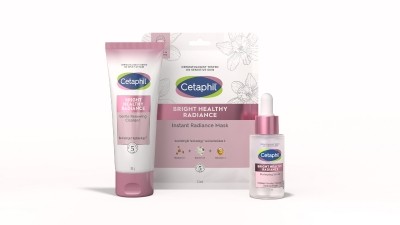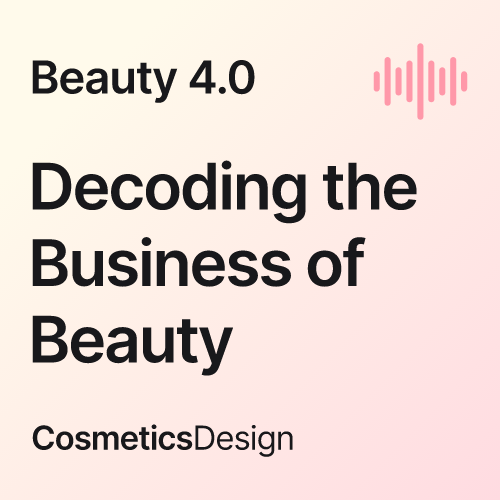Exact mechanisms behind blue light skin damage ‘still not fully known’: Review
![There are a raft of theories available and ongoing research happening to identify the precise process behind blue light-induced skin damage [Getty Images]](/var/wrbm_gb_food_pharma/storage/images/_aliases/wrbm_large/publications/cosmetics/cosmeticsdesign-europe.com/article/2023/02/24/blue-light-skin-damage-science-must-focus-on-mechanisms-of-action-say-researchers/16198408-1-eng-GB/Blue-light-skin-damage-science-must-focus-on-mechanisms-of-action-say-researchers.jpg)
Writing in the Journal of Cosmetic Dermatology, researchers from Germany, Iran, India and the US conducted a literature review to better understand the impact blue light and digital screens had on the skin, focusing on the mechanisms by which damage occurred.
“Numerous studies have shown that being exposed to blue light accelerates the ageing process and produces cutaneous hyperpigmentation. It also modifies the circadian rhythm,” the researchers wrote.
And long-term exposure to blue light, they said, had “numerous detrimental effects”, including DNA damage, oxidative stress, and increased melanogenesis leading to pigmentation and photoageing.
‘Theories’ in place for blue light skin damage
However, the “precise process” behind how blue light accelerated ageing was “still not fully known”, according to the researchers. A recent Johnson & Johnson study suggested understanding was being hampered by a lack of standardised research methods in the field.
There were, though, many ongoing studies and a variety of “theories”, they said, as well as rising ideas on blue light’s mechanism(s) of action.
Research, for example, showed the two main molecules mediating cellular responses to blue light to be nitric oxide (NO) and reactive oxygen species (ROS). Other research detailed how the creation of superoxide by blue light could play a role in the ageing and carcinogenesis of the skin.
Another hypothesis on how exposure caused skin damage was that blue light interfered with skin cells’ nightly rhythm, crucial for skin cell regeneration and repair, and a different piece of research suggested it was the oxidative stress on melanogenic precursors that caused pigmentation changes.
The researchers said some theories also suggested the complex IV of the electron transport chain called cytochrome c oxidase, located in the mitochondrial membrane, could be the mechanism through which blue light influences mitochondrial activity.
“In the near future, as we learn more about the mechanism of harm that blue light exposure causes to the skin, we may anticipate seeing a rise in the number of compounds introduced for blue light protection and new methodologies created to test goods for blue light protection claims,” they wrote.
Prevention best for blue light protection
Antioxidants could already be used to counter ROS production, the researchers said, and physical sunscreens with active components such as iron oxide and zinc oxide could offer protection from blue light. Currently, though, the “best treatment” was prevention, they said.
“It is more crucial to try to take preventative measures through various treatments. The simplest approach to minimise blue light damage is to restrict exposure and reduce screen time by taking frequent pauses from your device to reset your eyes,” they wrote. Use of screen filters or protectors could also be considered, as well as use of ‘night mode’ settings across digital devices.
Source: Journal of Cosmetic Dermatology
Published January 2023 online ahead of print, doi: 10.1111/jocd.15576
Title: “The Impact of blue light and digital screens on the skin”
Authors: J. Kumari et al.

![[Getty Images]](/var/wrbm_gb_food_pharma/storage/images/_aliases/wrbm_medium/publications/cosmetics/cosmeticsdesign-asia.com/headlines/formulation-science/skin-science-top-five-stories-on-cosmetics-science-and-formulation7/16307824-1-eng-GB/Skin-science-Top-five-stories-on-cosmetics-science-and-formulation.jpg)
![Babywell Check is a skin barrier test for infants based Kao's RNA testing technology. [Kao]](/var/wrbm_gb_food_pharma/storage/images/_aliases/wrbm_medium/publications/cosmetics/cosmeticsdesign-asia.com/headlines/brand-innovation/kao-applies-rna-monitoring-tech-to-non-invasive-baby-skin-care-testing-kit/16216333-1-eng-GB/Kao-applies-RNA-monitoring-tech-to-non-invasive-baby-skin-care-testing-kit.png)
![Aēsop is today present in 29 markets, has 395 stores and increased its gross sales between 2012 and 2022 by €465m (US$509m) [Image: Aesop Facebook]](/var/wrbm_gb_food_pharma/storage/images/_aliases/wrbm_medium/publications/cosmetics/cosmeticsdesign-europe.com/article/2023/04/04/l-oreal-to-acquire-natura-co-owned-aesop-for-us-2.5bn-and-grow-brand-globally/16305295-1-eng-GB/L-Oreal-to-acquire-Natura-Co-owned-Aesop-for-US-2.5bn-and-grow-brand-globally.jpg)





![Indus Valley is working to corner 30% of India's online premium boxed hair colour market. [Indus Valley]](/var/wrbm_gb_food_pharma/storage/images/_aliases/wrbm_tiny/publications/cosmetics/cosmeticsdesign-asia.com/article/2024/07/26/indus-valley-aims-to-secure-30-of-india-s-online-premium-hair-colour-market-with-organic-offerings/17594932-5-eng-GB/Indus-Valley-aims-to-secure-30-of-India-s-online-premium-hair-colour-market-with-organic-offerings.jpg)
![[Getty Images]](/var/wrbm_gb_food_pharma/storage/images/_aliases/wrbm_tiny/publications/cosmetics/cosmeticsdesign-asia.com/china/china-focus-latest-developments-in-china-s-booming-beauty-market25/17606695-1-eng-GB/China-focus-Latest-developments-in-China-s-booming-beauty-market.jpg)
![Kosé has launched makeup brand Visée in Singapore as part of plans to reinforce its position in SEA. [Visée]](/var/wrbm_gb_food_pharma/storage/images/_aliases/wrbm_tiny/publications/cosmetics/cosmeticsdesign-asia.com/headlines/business-financial/visee-singapore-kose-aims-to-enhance-brand-visibility-in-sea-with-new-launch/17587264-1-eng-GB/Visee-Singapore-Kose-aims-to-enhance-brand-visibility-in-SEA-with-new-launch.jpg)
![ble C&C is set on reinforcing its competitiveness in China’s beauty market. [Missha]](/var/wrbm_gb_food_pharma/storage/images/_aliases/wrbm_tiny/publications/cosmetics/cosmeticsdesign-asia.com/headlines/business-financial/able-c-c-aims-to-strengthen-competitiveness-in-china-through-online-expansion-kol-collabs/17591626-1-eng-GB/Able-C-C-aims-to-strengthen-competitiveness-in-China-through-online-expansion-KOL-collabs.jpg)

![LG H&H genetic study says 23 genetic regions affect natural skin tone. [Getty Images]](/var/wrbm_gb_food_pharma/storage/images/_aliases/wrbm_tiny/publications/cosmetics/cosmeticsdesign-asia.com/article/2024/07/23/lg-h-h-discovery-of-genetic-skin-tone-factors-in-east-asians-potentially-key-to-skin-radiance-developments/17587210-1-eng-GB/LG-H-H-discovery-of-genetic-skin-tone-factors-in-East-Asians-potentially-key-to-skin-radiance-developments.jpg)

![DR.CI:LABO expects brand-supplier partnerships gain more public prominence as consumers interest in skin care grows online. [Dr.Ci:Labo]](/var/wrbm_gb_food_pharma/storage/images/_aliases/wrbm_tiny/publications/cosmetics/cosmeticsdesign-asia.com/article/2024/07/22/brand-supplier-partnerships-will-come-to-the-fore-amid-the-online-skin-care-landscape-dr.ci-labo/17576755-1-eng-GB/Brand-supplier-partnerships-will-come-to-the-fore-amid-the-online-skin-care-landscape-DR.CI-LABO.png)


